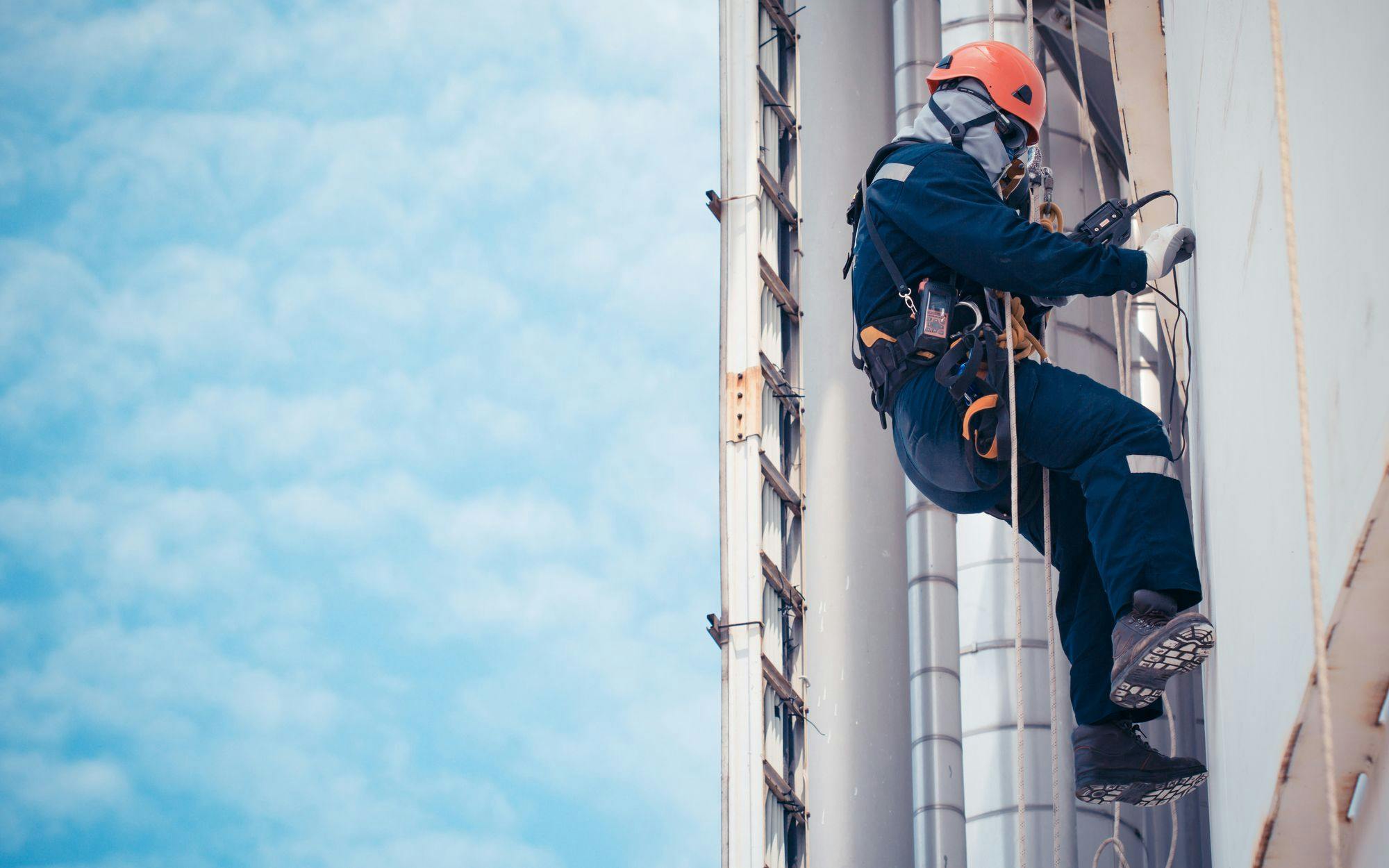
Enhance Building and Façade Inspection With Industrial Rope Access
In 1980, New York City passed Local Law 10/80, requiring periodic inspection of building facades and exteriors for all properties six stories or taller. This law was later expanded to become Local Law 11/98, and finally 1-RCNY 103-04, the Facade Inspection Safety Program (FISP).
FISP covers approximately 13,000 properties and is one of the most stringent of all facade inspection ordinances in the United States. It mandates that owners of buildings higher than six stories engage a qualified exterior wall inspector (QEWI) to inspect their building exterior and file a technical report on the condition of the facade once every five years. The technical report is uploaded using DOB NOW, the new public-facing web interface that allows customers to conduct transactions with the Department of Buildings online. If there are any dangerous conditions on the building exterior—such as loose stones or bulging masonry—owners have 90 days to conduct repair efforts, with appropriate extensions, followed by a final inspection and the filing of an amended report.
Under the provisions of Local Law 10/80, owners could conduct the facade inspection from the ground with binoculars or a telescope. Guidelines did not require an up-close, hands-on inspection. However, beginning with Local Law 11/98 and under current FISP guidelines, inspections must be hands-on, with inspectors making at least one drop per representative area of the facade.
To conduct this inspection, owners typically employ contractors using a suspended scaffold, a platform suspended by ropes or steel cables, enabling the QEWI or qualified person to access the building exterior. However, this more traditional access method is expensive, disruptive and limited in scope; performing multiple drops where required adds even more time and expense.
Industrial Rope Access
Industrial rope access (IRA) is a faster, more efficient and more cost-effective way to conduct building and facade inspection. Experienced building enclosure specialists, rigorously trained and certified in rope access techniques, can inspect the building exterior using a specialized harness, descent line and safety line. Typically, these inspectors perform controlled descent (rappel) from the top of the building, reaching a wider area of a building than they could using traditional access methods. A rope access team can conduct as many as 10 to 12 drops on a building per day, facilitating inspection of many different areas of the facade. For buildings with multiple setbacks, this is particularly effective, as IRA drops are continuous from roof to sidewalk, eliminating the need for repetitive rigging at multiple levels.
IRA benefits building owners by reducing cost and time, causing less disruption to the building and its occupants. Most importantly, rope access provides a more comprehensive inspection, which, in turn, affords the ability for greater analysis and development of a more specific repair plan—leading to real savings in the construction phase. In most cases, the complete inspection of a building can be done in one day.
Offering building owners and clients a comprehensive assessment of the building allows for more accurate budgeting of current and future work. This approach results in a better-informed client with a greater ability to manage their assets and the inspection and repair process. The rope access technique also protects historic buildings, since it has less impact on a building’s exterior than suspended scaffolding.
Rather than teaching rock climbers to inspect buildings, some companies train their architects, engineers and façade specialists as industrial rope access technicians. This requires extensive instruction, testing and field time, including three tiers of certification with up to 1500 rope hours to achieve “Level III.” Training includes instruction on equipment, from ropes and anchors to safety gear, and focuses on safety, rigging requirements and inspection techniques.
Related stories








